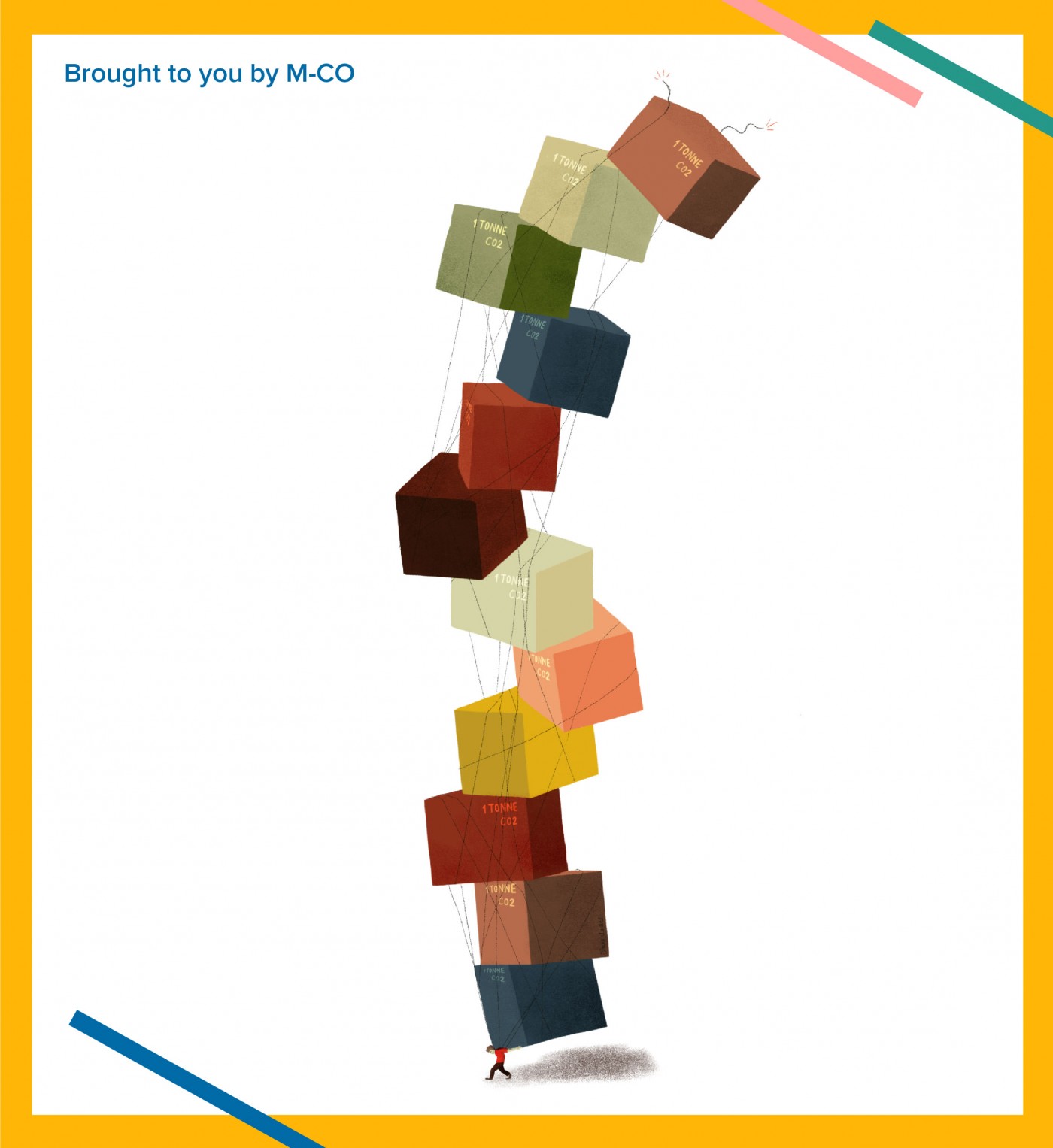Recently, we spoke about the advantages of trees and forests as valuable carbon sinks. We noted that Ireland’s forests absorb about 4 million tonnes of carbon dioxide (CO2) from the atmosphere each year, and we acknowledged that we need to ramp up afforestation if we want to make any substantial strides towards a healthier and safer environment.
During a recent consultation workshop, one of our participants noted that there are only two ways that we can try to prevent climate change:
A: Sequester CO2
or
B: Reduce CO2 Emissions
And we agree…
But before we can start making changes, we need to understand what our current impact is, and what that actually looks like.
So, let’s go…
According to the Environmental Protection Agency, in 2020, Ireland’s greenhouse gas emissions were estimated to be 57.70 million tonnes of CO2 equivalent per year, ranking one of the highest emitters in the EEA/EU with an average of 25% more tCO2e than our climate conscious neighbours[1] [2].
We say CO2 equivalent, and tCO2e, as noted by M-CO’s Dr Simon O’Rafferty,
“It’s important to reference “tonnes of CO2 equivalent” or “tCO2e”, rather than just CO2, as this is the measure used that combines the main greenhouse gases: Carbon Dioxide (CO2) Methane (CH4) Nitrous Oxide (N2O) and Fluorinate Gases.”
Simon also explained that “some greenhouse gases have a higher impact but are emitted in lower quantities and from different sources. CO2 makes up 75% of all greenhouse gases, which is why tCO2e is used.”
So now that we’ve explained tCO2e, let’s get into it.
On a per-capita basis, we rank the third worst, with the average person emitting almost 12 tonnes of CO2 equivalent each year, compared to the EU average of 7.9 tCO2e [3].
It is estimated that 75% of these emissions come from food, housing, and transport. The rest is made up of things like manufactured products, services, and clothing.
In 2020, the UN proposed that to meet the UN Paris Agreement goal of limiting global warming to 1.5°C, our global per-capita carbon footprint needs to be reduced to 2.5 tonnes of CO2 equivalent per year by 2030, and 0.7 tonnes per year by 2050 [4].
While our ranking speaks for itself, sometimes it can be difficult to comprehend all of these numbers.
Without being able to visualise our current impact, how can we measure the necessity for change?
Well, we found a way that just might help…
In 2009, an art installation at the UN climate talks in Copenhagen pragmatically conceptualised that brain boggling question…
What does one tCO2e look like? [5]

The cube, representing one tCO2e, measures 27 x 27 x 27 feet, the equivalent of a three-story building or 18 dairy cows in weight [6] [7].
Considering how daunting just one tCO2e is, let’s not forget that we are each responsible for contributing 12 tCO2e each year. That’s an extra eleven of those burning hot cubes we handover to the atmosphere each year.
It’s hard to imagine what that might look like, but we said we would give it a go ….

Taking inspiration from our Danish friends, M-CO Designer, Claire Vickery, illustrates what contributing 12 tonnes of CO2e each year looks like.
Judging by this illustration, the weight of the world really is on our shoulders… and we need to start reducing that weight.
But how do we do that?
For starters, why not find out your or your family’s current carbon footprint by using Giki’s science-based calendar and go from there.
Learn how you and your family can lead a more sustainable lifestyle and challenge each other to meet those goals.
By making sustainable changes every day such as dietary switches (more veg less meat), less time in our cars and more time walking or cycling, and being diligent with electricity usage (turn off lights when not using them) etc., we can start reducing the level of greenhouse gases we contribute to our earth’s atmosphere each year and subsequently mitigate climate change.
We hope by now, conceptualising CO2 (tonnes of CO2 equivalent/ tCO2e) is a little easier, and understanding your individual impact is clearer in a way that will allow you to make the changes needed to help protect our environment.
References:
- 1.https://www.epa.ie/our-services/monitoring–assessment/climate-change/ghg/latest-emissions-data/#:~:text=In%202020%2C%20Ireland’s%20GHG%20emissions,for%202019%20compared%20to%202018.
- 2.https://www.ucc.ie/en/eri/news/5-ways-an-irish-household-can-reduce-carbon-emissions.html
- 3.https://www.cso.ie/en/releasesandpublications/ep/p-eii/environmentalindicatorsireland2021/
- 4.https://unfccc.int/process-and-meetings/the-paris-agreement/the-paris-agreement#:~:text=The%20Paris%20Agreement%20is%20a,compared%20to%20pre%2Dindustrial%20levels.
- 5.https://radiclebalance.com/resources/articles/what-is-a-tonne-of-co2
- 6.https://www.crownoil.co.uk/news/1-tonne-of-co2-what-does-it-look-like/#:~:text=That’s%20equivalent%20to%3A,25%20million%20plastic%20straws
- 7.https://www.un.org/press/en/2009/091201_Cubes.doc.htm
